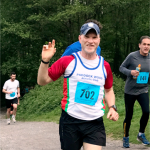Achilles Tendon Injuries – The Facts

Achilles Tendon injuries are common amongst runners and active people. The Achilles tendon is the longest tendon in the body and attaches the calf muscles to the foot. It is active in providing stability as the foot lands in the early contact phase of gait and in propulsion as the foot leaves the ground. In runners it is subject to very high loads so is vulnerable to overuse type injuries.
How does the tendon get injured?
The injury occurs when the breakdown of collagen fibres in the tendon occurs at a greater rate than the body's ability to regenerate. This happens where there is repetitive loading and stress on the tendon over time due to factors such as overtraining, a change in running style without sufficient adaptation over time, or weakness in other muscle groups leading to an increased workload on the tendon.
How do I know if I've got it?
The signs and symptoms of Achilles Tendinopathy are pain, swelling and stiffness in the Achilles Tendon, usually at about the mid-section of the tendon. Pain and stiffness can be felt during exercise, but generally hurts up to 24 to 48 hours after loading.
Do I need to stop running and rest it?
In the very early stages rest from exercise can help to ease symptoms. However tendons don’t like to be rested for too long so early mobilisation in a controlled way is key in the first stages of rehabilitation.
High impact exercise such as running and jumping should be avoided if tendon pain is more than 3/10 on a scale of 1 to 10 in a 24 to 48 hour period after exercise. At this stage low impact cross training such as cycling, swimming or pool running is important to maintain aerobic fitness and mobilise the tendon without overloading it.
The secret to quicker recovery with Achilles Tendon problems is managing load through the tendon, making sure the tendon is not ‘overloaded’ or ‘underloaded’. This can be tricky to get right so in most cases some professional help will be needed to properly manage the injury and speed up the healing process.
How can we help?
At Active Podiatry I manage Achilles tendon injuries in the following way:
- Pain relief in the early stages of recovery using shockwave and laser therapy as needed
- Controlled rehabilitation exercises such as heel drops under supervision to strengthen and rehabilitate the tendon.
- Giving advice with load management by identifying the optimal loads to maintain function and strength in the tendon whilst not overloading it too much during the healing stages.
- Identification of any biomechanical issues such as weakness in the calf muscles or other muscle groups which may be contributing to abnormal loading of the tendon.
- Assessment of running gait if needed to identify any issues with running technique which may be overloading the tendon.
Remember that prevention is better than cure so warm ups before exercise, warm downs after exercise, and avoiding overtraining, or 'too much too soon', will all help to reduce the risks of this frustrating injury from occurring in the first place.
I have a small favour to ask you.
I produce these blogs for the benefit of the running community and I want as many runners as possible to benefit from these. It would really help me if you could take a moment to share these articles with your friends on social media and any relevant groups or forums that you may be subscribed to.
Please feel free to post any questions and comments if these blog post raise any issues for you. Thanks from a fellow runner!


